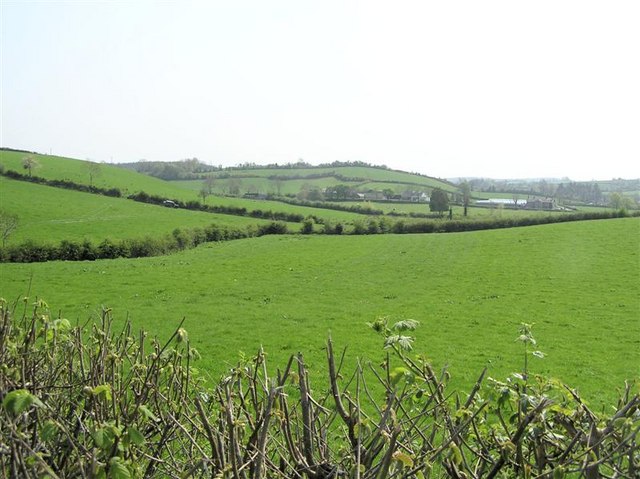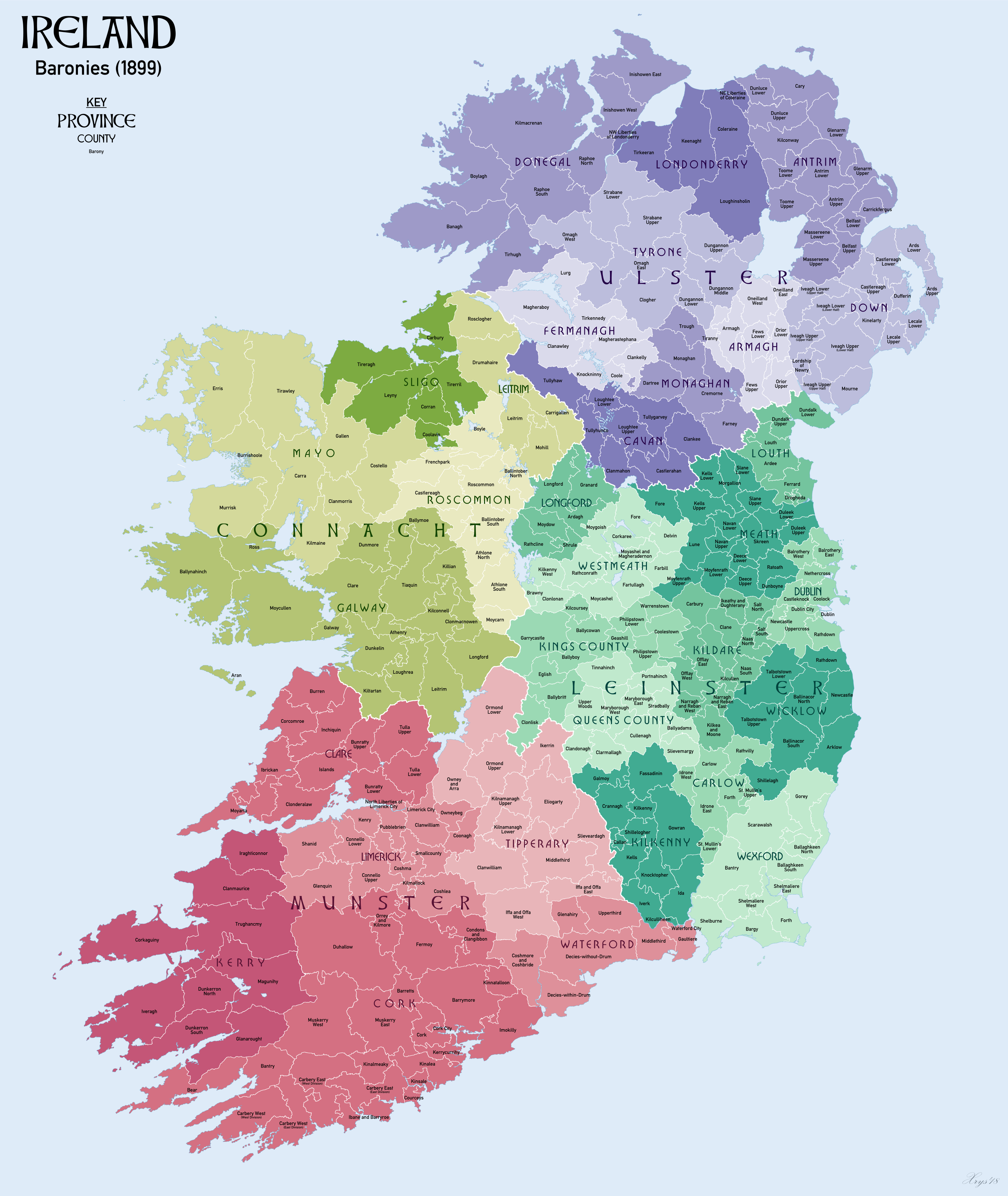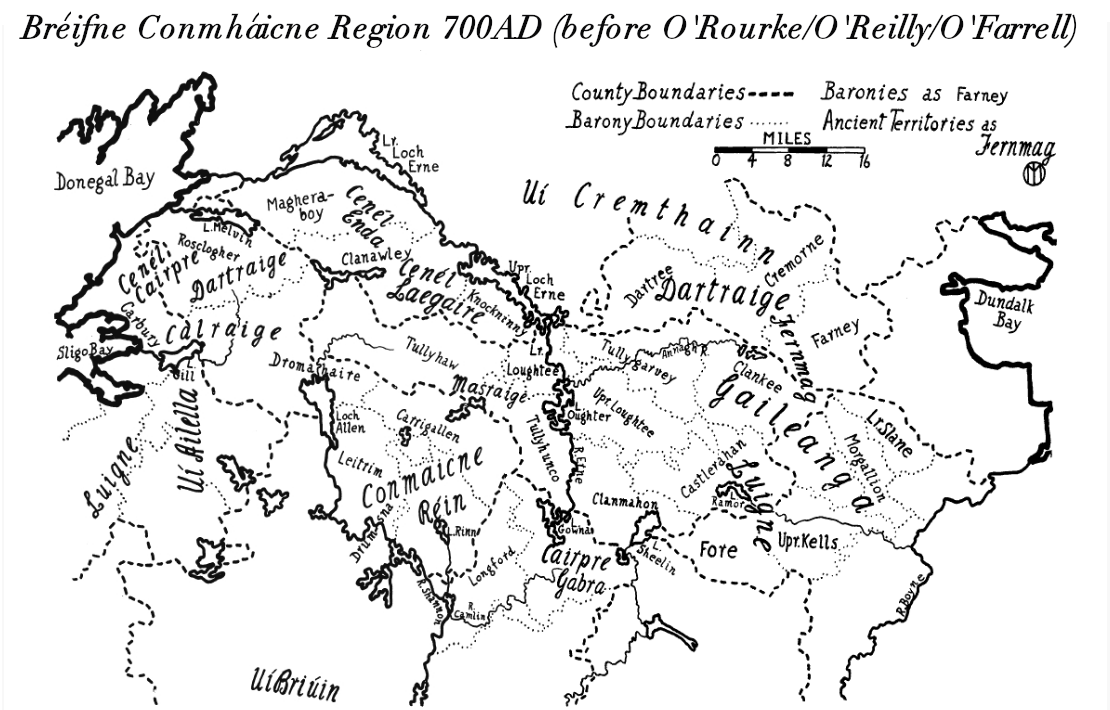|
Dartree
Dartree () is a barony in County Monaghan, Ireland. Etymology Dartree is known in Irish as ''Dartraí'' from the ancient kingdom ''Dartraighe'', named after the ''n-Dartraighi'' or ''Dairtre'' people. Location Dartree is found in west County Monaghan. Dartree barony is bordered to the northeast by Monaghan; to the southeast by Cremorne (both the preceding are also in County Monaghan); to the west by Clankelly, County Fermanagh; and to the south by Tullygarvey, County Cavan. List of settlements Below is a list of settlements in Dartree barony: * Clones * Newbliss * Rockcorry *Scotshouse Scotshouse () is a small agricultural village in the Civil parishes in Ireland, parish of Currin in County Monaghan, Ireland. It is roughly three miles east of where the counties of County Cavan, Cavan, County Fermanagh, Fermanagh and Monaghan m ... References {{County Monaghan ... [...More Info...] [...Related Items...] OR: [Wikipedia] [Google] [Baidu] |
Dartraighe
Dartraighe (older spelling: Dartraige), anglicised as ''Dartree'', ''Dartry'' or '' Dartrey'', was an Irish territory or tuath in medieval Ireland which stretched north to Clones and south to the Dromore River. It was later incorporated into County Monaghan as the barony of Dartree. History The Dartraighe were an Irish túath, also known as ''n-Dartraighi'' or ''Dairtre'' who gave their name to a territory in the western portion of what is now known as County Monaghan. The name means "calf-people". Various anglicized forms of the name were used through the years. A segment of its southern region became the Dartrey Estate, owned by Richard Dawson in the 17th century, and known as Dawson's Grove, which is now Dartrey Forest. It includes Inner Lough with its small island - probably an old crannog, which may explain the name ''Dartraige Coinn innsi'' (Dartry of the Island Chief), which occurs in the annals, perhaps to distinguish this Dartraige from another centered in Kingdom of ... [...More Info...] [...Related Items...] OR: [Wikipedia] [Google] [Baidu] |
Cremorne (barony)
Cremorne () is a barony in County Monaghan, Ireland. Etymology Cremorne is known in Irish as ''Críoch Mhúrn'' from the Old Irish '' Crích Mugdornd'', border of the Mugdorna (Murnú), a pre-Celtic or early Celtic people who inhabited much of Ulster before being pushed out by the Gailenga. This people also give their name to the Mourne Mountains and Mourne barony. Location Cremorne is found in east County Monaghan. Cremorne barony is bordered to the north by Monaghan; to the northwest by Dartree; to the south by Farney (all the preceding are also in County Monaghan); to the east by Tiranny, Upper Fews and Armagh, County Armagh; and to the southwest by Clankee and Tullygarvey, County Cavan. History Up to about AD 800, the Mugdorna territory stretched from Monaghan to the River Boyne at Navan. O'Hanraghty (O hInnreachtaigh) settled in this barony from Ui Meith Macha in County Louth following the Norman invasion. The Leslie family is cited in more recent times as Earl of ... [...More Info...] [...Related Items...] OR: [Wikipedia] [Google] [Baidu] |
Monaghan (barony)
Monaghan () is a barony in County Monaghan, Ireland. Etymology Monaghan barony takes its name from Monaghan town (, "abounding in thickets"). Location Monaghan is found in central County Monaghan. Monaghan barony is bordered to the north by Trough; to the southwest by Dartree; to the southeast by Cremorne (all the preceding are also in County Monaghan); to the east by Tiranny, County Armagh; and to the west by Magherastephana and Clankelly, County Fermanagh. History The MacMahons were chiefs in medieval times. List of settlements Below is a list of settlements in Monaghan barony: * Ballinode *Monaghan Monaghan ( ; ) is the county town of County Monaghan, Republic of Ireland, Ireland. It also provides the name of its Civil parishes in Ireland, civil parish and Monaghan (barony), Monaghan barony. The population of the town as of the 2022 cen ... * Scotstown * Smithborough References {{County Monaghan Baronies of County Monaghan ... [...More Info...] [...Related Items...] OR: [Wikipedia] [Google] [Baidu] |
Clones, County Monaghan
Clones ( ; , meaning 'meadow of Eois') is a small town in the west of County Monaghan in Ireland. The area is part of the List of regions of the Republic of Ireland, Border Region in the Republic of Ireland, earmarked for economic development by the Irish Government due to its currently below-average economic situation. The town was badly hit economically by the Partition of Ireland in 1921 because of its location on the border with County Fermanagh in Northern Ireland. The creation of the Irish border deprived it of access to a large part of its economic hinterland for many years. The town had a population of 1,885 at the 2022 census of Ireland, 2022 census. The town is in a Civil parishes in Ireland, civil parish of the same name. Toponymy Historically Clones was also spelt ''Clonis'', ''Clonish'' and ''Clownish''. These are anglicised versions of the Irish ''Cluain Eois'', meaning "Eos's meadow". The ancient name was ''Cluan Innis'', "island of retreat", it having formerly ... [...More Info...] [...Related Items...] OR: [Wikipedia] [Google] [Baidu] |
Clankelly
Clankelly ( Irish: ''Clann Cheallaigh'', meaning Clan Kelly or, more literally, 'Offspring of Ceallaigh' Brian G. Scott (General Editor), Claire Foley and Ronan McHugh, ''An Archaeological Survey of County Fermanagh: Volume 1 - Part 1: The Prehistoric Period'', pp. 25-26. N.I.E.A., Belfast, and Colourpoint Books, Newtownards, 2014.) is a barony in County Fermanagh, Northern Ireland. It is the only barony in County Fermanagh not connected to Lough Erne. It is bordered by two other baronies in Northern Ireland: Coole to the south-west; and Magherastephana to the north-west. It also borders two baronies in the Republic of Ireland: Monaghan Monaghan ( ; ) is the county town of County Monaghan, Republic of Ireland, Ireland. It also provides the name of its Civil parishes in Ireland, civil parish and Monaghan (barony), Monaghan barony. The population of the town as of the 2022 cen ... to the north-east; and Dartree to the south-east. History Clankelly takes its name from C ... [...More Info...] [...Related Items...] OR: [Wikipedia] [Google] [Baidu] |
Scotshouse
Scotshouse () is a small agricultural village in the Civil parishes in Ireland, parish of Currin in County Monaghan, Ireland. It is roughly three miles east of where the counties of County Cavan, Cavan, County Fermanagh, Fermanagh and Monaghan meet. Scotshouse is about from Clones, County Monaghan, Clones, from Cavan town and away from Monaghan town. Scotshouse is in the townland of Aghnahola (). Finn Bridge, a border crossing on the Finn River (County Fermanagh and County Monaghan), Finn River, is west of Scotshouse. Churches There are two churches in Scotshouse; St. Andrew's Church (Church of Ireland) and the Church of the Immaculate Conception (Roman Catholic). The former, St. Andrew's Church, celebrated its 200th anniversary in 2010. It contains a memorial stained glass window for those who died in the First World War and a memorial plaque to Ernest Waldron King, an assistant purser with the White Star Line who died when the ''Titanic'' sank. The church and its graveyard ... [...More Info...] [...Related Items...] OR: [Wikipedia] [Google] [Baidu] |
County Monaghan
County Monaghan ( ; ) is a Counties of Ireland, county in Ireland. It is in the Provinces of Ireland, province of Ulster and is part of Border Region, Border strategic planning area of the Northern and Western Region. It is named after the town of Monaghan. Monaghan County Council is the Local government in the Republic of Ireland, local authority for the county. The population of the county was 65,288, according to the 2022 census. The county has existed since 1585 when the Mac Mathghamhna rulers of Airgíalla agreed to join the Kingdom of Ireland. Following the 20th-century Irish War of Independence and the signing of the Anglo-Irish Treaty, Monaghan was one of three Ulster counties to join the Irish Free State rather than Northern Ireland. Geography and subdivisions County Monaghan is the fifth-smallest of the Republic's 26 counties by area, and the fourth smallest by population. It is the smallest of Ulster's nine counties in terms of population. Baronies * Cremorne (ba ... [...More Info...] [...Related Items...] OR: [Wikipedia] [Google] [Baidu] |
Counties Of Ireland
The counties of Ireland (Irish language, Irish: ) are historic administrative divisions of the island. They began as Normans in Ireland, Norman structures, and as the powers exercised by the Cambro-Norman barons and the Old English (Ireland), Old English nobility waned over time, new offices of political control came to be established at a county level. The number of counties varied depending on the time period, however thirty-two is the traditionally accepted and used number. Upon the partition of Ireland in 1921, six of the traditional counties became part of Northern Ireland. In Northern Ireland, Counties of Northern Ireland, counties ceased to be used for local government in 1973; Local government in Northern Ireland, districts are instead used. In the Republic of Ireland, some counties have been split resulting in the creation of new counties: there are currently 26 counties, 3 cities and 2 cities and counties that demarcate areas of local government in the Republic of Ire ... [...More Info...] [...Related Items...] OR: [Wikipedia] [Google] [Baidu] |
Barony (Ireland)
In Ireland, a barony (, plural ) is a historical subdivision of a counties of Ireland, county, analogous to the hundred (county subdivision), hundreds into which the counties of England were divided. Baronies were created during the Tudor reconquest of Ireland, replacing the earlier cantreds formed after the original Norman invasion of Ireland, Norman invasion.Mac Cotter 2005, pp.327–330 Some early baronies were later subdivided into half baronies with the same standing as full baronies. Baronies were mainly cadastre, cadastral rather than administrative units. They acquired modest local taxation and spending functions in the 19th century before being superseded by the Local Government (Ireland) Act 1898. Subsequent adjustments of county boundaries mean that some baronies now straddle two counties. The final catalogue of baronies numbered 331, with an average area of ; each county was divided, on average, into 10 or 11 baronies. Creation The island of Ireland was "shired" i ... [...More Info...] [...Related Items...] OR: [Wikipedia] [Google] [Baidu] |
Republic Of Ireland
Ireland ( ), also known as the Republic of Ireland (), is a country in Northwestern Europe, north-western Europe consisting of 26 of the 32 Counties of Ireland, counties of the island of Ireland, with a population of about 5.4 million. Its capital city, capital and largest city is Dublin, on the eastern side of the island, with a population of over 1.5 million. The sovereign state shares its only land border with Northern Ireland, which is Countries of the United Kingdom, part of the United Kingdom. It is otherwise surrounded by the Atlantic Ocean, with the Celtic Sea to the south, St George's Channel to the south-east and the Irish Sea to the east. It is a Unitary state, unitary, parliamentary republic. The legislature, the , consists of a lower house, ; an upper house, ; and an elected President of Ireland, president () who serves as the largely ceremonial head of state, but with some important powers and duties. The head of government is the (prime minister, ), ... [...More Info...] [...Related Items...] OR: [Wikipedia] [Google] [Baidu] |
County Fermanagh
County Fermanagh ( ; ) is one of the thirty-two counties of Ireland, one of the nine counties of Ulster and one of six counties of Northern Ireland. The county covers an area of and had a population of 63,585 as of 2021. Enniskillen is the county town and largest in both size and population. Fermanagh is one of four counties of Northern Ireland to have a majority of its population from a Catholic background, according to the 2011 census. Geography Fermanagh spans an area of 1,851 km2 (715 sq; mi), accounting for 13.2% of the landmass of Northern Ireland. Nearly a third of the county is covered by lakes and waterways, including Upper and Lower Lough Erne and the River Erne. Forests cover 14% of the landmass (42,000 hectares). It is the only county in Northern Ireland that does not border Lough Neagh. The county has three prominent upland areas: * the expansive West Fermanagh Scarplands to the southwest of Lough Erne, which rise to about 350m, * the Sl ... [...More Info...] [...Related Items...] OR: [Wikipedia] [Google] [Baidu] |
Tullygarvey
Tullygarvey () is one of eight Baronies in the County of Cavan. The area has been in constant occupation since pre-4000 BC. The Barony of Tullygarvey consists of the parishes of Kill and Drung and parts of Annagh, Drumgoon and Laragh. Tullygarvey derives its name from the Irish meaning "Gairbhéith's household", Gairbhéith was a member of the Uí Briúin dynasty of Connacht. He was an ancestor of the O'Reilly clan and lived c.860 AD. He was not connected to the McGarvey clan of Donegal. It is located in the northeast of County Cavan, along the Annagh River. History In 1579, East Breifne, then part of Connacht, was made a shire. The shire was named Cavan after the area's main town. The administration remained in the control of the local Irish dynasty and subject to the Brehon and Canon Law. In 1584, Sir John Perrot formed the shire into a county in Ulster Ulster (; or ; or ''Ulster'') is one of the four traditional or historic provinces of Ireland, Irish provin ... [...More Info...] [...Related Items...] OR: [Wikipedia] [Google] [Baidu] |






